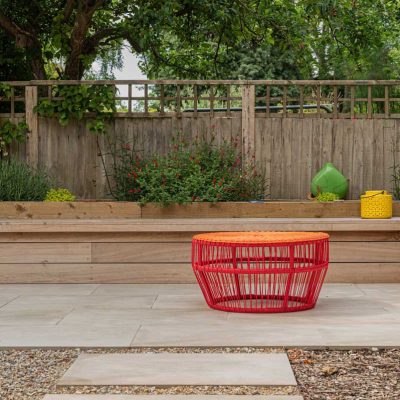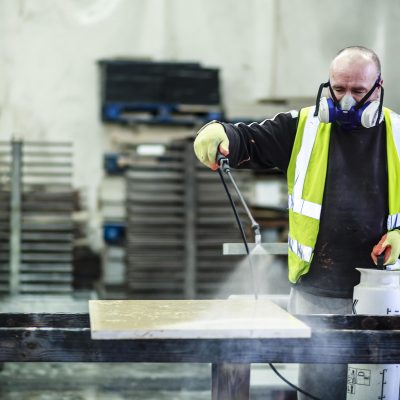At London Stone we stock some of the best jointing compounds on the market, but even the best will look a mess if you don’t do a good job. Read our tips on pointing a patio, to achieve a truly professional finish.
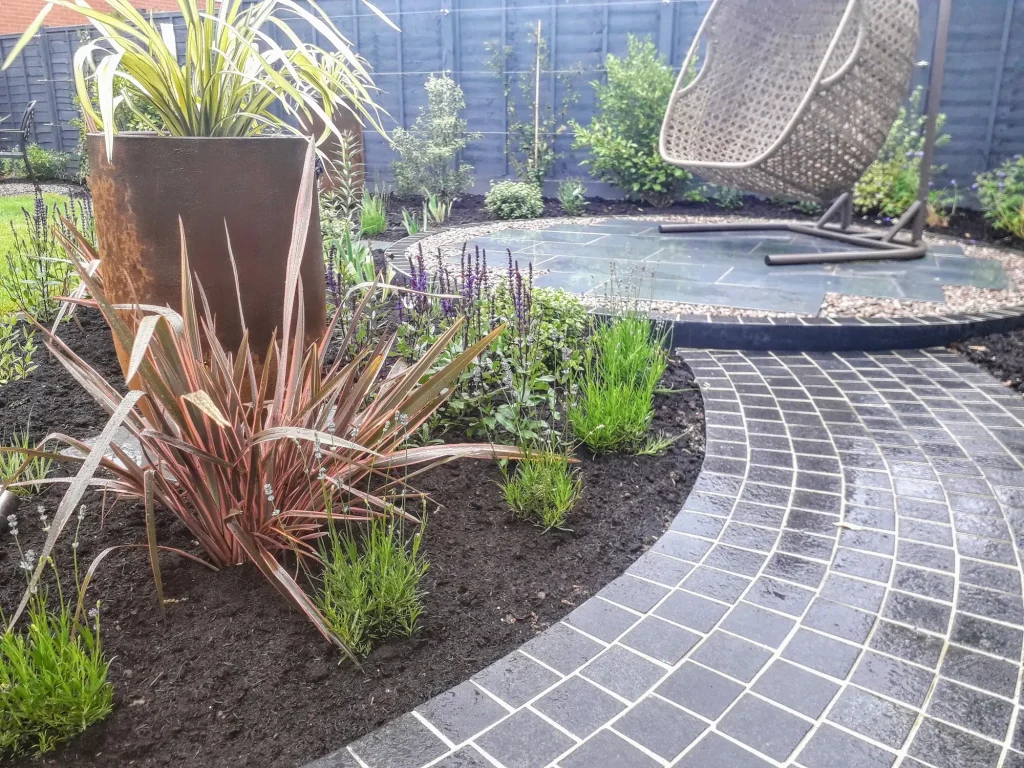
Why Point a Patio?
Structurally, pointing strengthens the patio by preventing any horizontal movement of the paving slabs. It also seals the gaps between the paving slabs and prevents surface water from getting underneath the paving, where it can cause damage.
Patio pointing is also very important to a patio's appearance. It’s an annoying fact that, when we look at something, our eyes are drawn to the mistakes. This is particularly the case when you’re pointing sawn stone paving or porcelain paving. Very precisely cut edges show up imperfections in grouting lines all the more. You don’t want to be irritated by small details every time you sit down to relax in the sun.
Occasionally you see the suggestion that slabs should be "butt jointed". This means laid edge to edge without pointing of any sort. Don't do this. Find out more about installing paving slabs in our helpful guide.
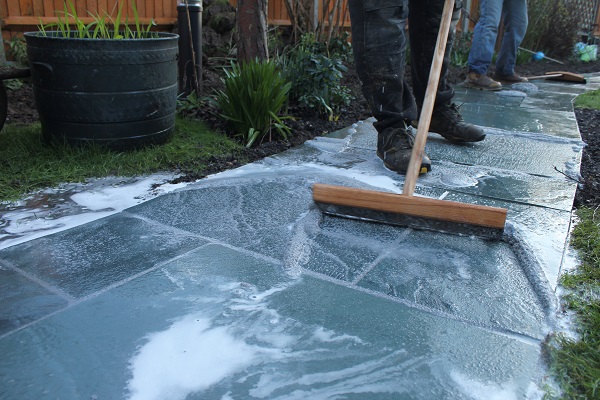
Choosing your jointing compound
With so much choice on the market, it can be hard to choose. Sweep-in mortars are some of the easiest to use and we recommend GftK for several reasons. Alternatively, you may prefer sand and cement or a gun mortar. Find out more in our guide to choosing pointing for porcelain and natural stone patios.
Tips on how to point your patio
1. Pre-sealing
Wherever possible, we strongly recommend pre-sealing natural stone, especially if you’re laying sawn paving. It’s much easier to clean over-spill off stone that’s been sealed. Porcelain generally doesn’t require sealing because it is such a dense material. However, there are occasions when it’s advantageous to seal porcelain.
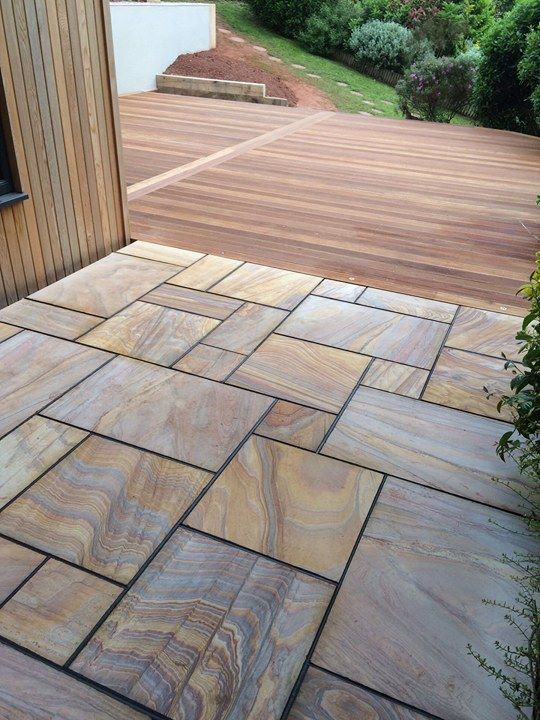
2. Damping down unsealed stone
If you intend to use gun-point mortar or sand and cement pointing on, for example, sandstone that hasn’t been sealed, you can guard against problems by damping the stone down. Don’t soak it, but make it obviously damp. This is done because dry stone will absorb water from the mortar. This can lead to picture-framing that won’t clean away. A damp stone won’t suck in mix from the compound.
3. Work in Small Areas
Once pointing is underway, the single most important approach is to ensure you don’t put in too much grout at any one time. Whether you’re using gun-point mortar or sand and cement, as soon as you apply the product it’s starting to “go off” or cure.
This makes it extremely important that you only apply product to the area you have the time to work with—that’s around 3m2 in 30 minutes. Start filling in too many joints and you’ll find that, when you go back to strike—or finish—the mortar, you won’t be able to create a smooth finish because it will already have started to harden.
During summer, when the weather is warmer, jointing compounds may go off quicker. So, pay attention to the behaviour of the mortar and reduce your working area until you see how it’s reacting.
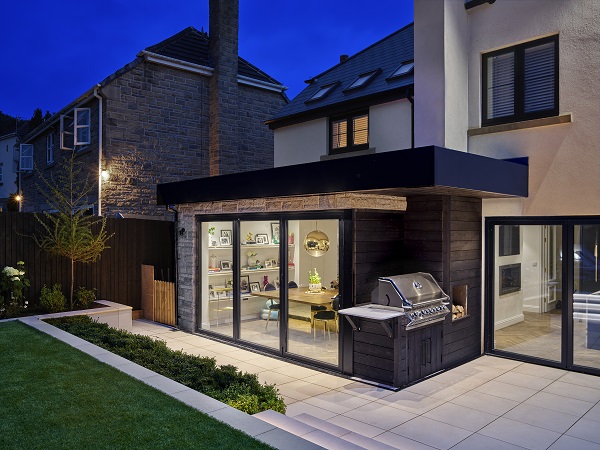
4. Make sure you fill the joints properly
Keep an eye on “slump”, where mortar sinks into the joints, creating hollows and an uneven finish. This less likely to happen with trowel-in and gun-able products but, if it does, must be rectified straight away before the pointing hardens.
Brush-in patio pointing is more forgiving than other materials because it bonds with itself, and you can top up joints even after they’ve hardened. No one wants to revisit a job if you can avoid it, though, so keep an eye on the slump of brush-in mortar. Top up deep joints and hollows and smooth off, so you won’t need to come back.
5. Clean up as you go
It’s infinitely easier, whether you’re laying natural stone or porcelain, to clean off the product before it’s started to go off. Be nice to yourself—wipe it away before it starts to harden!
And it really is as simple as that. The key is preparation and not getting ahead of yourself. Follow these basic rules and you’re immediately on track for a truly professional finish.
Check out our pointing products. If you have any questions, please don't hesitate to contact us. Or drop by one of our showrooms, where our trained staff will be happy to help.
Post updated: July 2023

/filters:quality(40)/mediadev/media/homepage/price_right_arrow.svg)
/filters:quality(60)/mediadev/media/menu-pics/menu_banner_mobile.png )
/filters:quality(60)/mediadev/media/menu-pics/all-porcelain.jpg )
/filters:quality(60)/mediadev/media/menu-pics/premium-italian.jpg )
/filters:quality(60)/mediadev/media/menu-pics/budget-porcelain.jpg )
/filters:quality(60)/mediadev/media/menu-pics/large-format-porcelain.jpg )
/filters:quality(60)/mediadev/media/menu-pics/wood-effect-porcelain.jpg )
/filters:quality(60)/mediadev/media/menu-pics/porcelain-planks.jpg )
/filters:quality(60)/mediadev/media/menu-pics/porcelain-setts.jpg )
/filters:quality(60)/mediadev/media/menu-pics/browse-all-paving.jpg )
/filters:quality(60)/mediadev/media/menu-pics/stone-paving.jpg )
/filters:quality(60)/mediadev/media/menu-pics/interior-tiles.jpg )
/filters:quality(60)/mediadev/media/menu-pics/stone-effect-porcelain.png )
/filters:quality(60)/mediadev/media/menu-pics/wood-effect-porcelain.png )
/filters:quality(60)/mediadev/media/menu-pics/grey-porcelain.png )
/filters:quality(60)/mediadev/media/menu-pics/beige-porcelain.png )
/filters:quality(60)/mediadev/media/menu-pics/dark-porcelain.png )
/filters:quality(60)/mediadev/media/menu-pics/light-porcelain.png )
/filters:quality(60)/mediadev/media/menu-pics/patio-grout.jpg)
/filters:quality(60)/mediadev/media/menu-pics/primers.jpg)
/filters:quality(60)/mediadev/media/menu-pics/porcelain-blades.jpg)
/filters:quality(90)/mediadev/media/menu-pics/drainage.jpg)
/filters:quality(60)/mediadev/media/menu-pics/cleaners.jpg)
/filters:quality(60)/mediadev/media/menu-pics/all-stone-paving.jpg )
/filters:quality(60)/mediadev/media/menu-pics/all-sawn-paving.jpg )
/filters:quality(60)/mediadev/media/menu-pics/all-riven-paving.jpg )
/filters:quality(60)/mediadev/media/menu-pics/indian-sandstone.jpg )
/filters:quality(60)/mediadev/media/menu-pics/limestone-paving.jpg )
/filters:quality(60)/mediadev/media/menu-pics/granite-paving.jpg )
/filters:quality(60)/mediadev/media/menu-pics/slate-paving.jpg )
/filters:quality(60)/mediadev/media/menu-pics/yorkstone-paving.jpg )
/filters:quality(60)/mediadev/media/menu-pics/stone-pavers.jpg )
/filters:quality(60)/mediadev/media/menu-pics/cobbles-setts.jpg )
/filters:quality(60)/mediadev/media/menu-pics/plank-paving.jpg )
/filters:quality(60)/mediadev/media/menu-pics/paving-circles.jpg )
/filters:quality(60)/mediadev/media/menu-pics/bespoke-paving-1.jpg )
/filters:quality(60)/mediadev/media/menu-pics/edging-stones-1.jpg )
/filters:quality(60)/mediadev/media/menu-pics/prestige-stone.jpg )
/filters:quality(60)/mediadev/media/menu-pics/grey-blue-stone.png)
/filters:quality(60)/mediadev/media/menu-pics/swatch-black-dark.jpg )
/filters:quality(60)/mediadev/media/menu-pics/swatch-buff-beige-white.jpg )
/filters:quality(60)/mediadev/media/menu-pics/sealants.jpg)
/filters:quality(60)/mediadev/media/menu-pics/all-clay-paving.jpg )
/filters:quality(60)/mediadev/media/menu-pics/alpha-clay-pavers.jpg )
/filters:quality(60)/mediadev/media/menu-pics/cottage-garden-clay-pavers.jpg )
/filters:quality(60)/mediadev/media/menu-pics/kessel-garden-clay-pavers.jpg )
/filters:quality(60)/mediadev/media/menu-pics/artisan-clay-pavers.jpg )
/filters:quality(60)/mediadev/media/menu-pics/grey-blue-clay-paver.png )
/filters:quality(60)/mediadev/media/menu-pics/red-brown-clay-pavers.png )
/filters:quality(60)/mediadev/media/menu-pics/beige-buff-clay-pavers.png )
/filters:quality(60)/mediadev/media/menu-pics/composite-decking.jpg )
/filters:quality(60)/mediadev/media/menu-pics/designboard-decking.jpg )
/filters:quality(60)/mediadev/media/menu-pics/classic-designboard.jpg )
/filters:quality(60)/mediadev/media/menu-pics/brushed-designboard.jpg )
/filters:quality(60)/mediadev/media/menu-pics/grooved-designboard.jpg )
/filters:quality(60)/mediadev/media/menu-pics/millboard-decking.jpg )
/filters:quality(60)/mediadev/media/menu-pics/grey-decking.jpg )
/filters:quality(60)/mediadev/media/menu-pics/black-charcoal-decking.jpg)
/filters:quality(60)/mediadev/media/menu-pics/brown-decking.jpg)
/filters:quality(60)/mediadev/media/menu-pics/all-build-deck.png )
/filters:quality(60)/mediadev/media/menu-pics/millboard-cladding.jpg )
/filters:quality(60)/mediadev/media/menu-pics/stone-cladding.jpg )
/filters:quality(60)/mediadev/media/menu-pics/all-garden-walling-1.jpg )
/filters:quality(60)/mediadev/media/menu-pics/facing-bricks.jpg )
/filters:quality(60)/mediadev/media/menu-pics/garden-screening.jpg )
/filters:quality(60)/mediadev/media/menu-pics/menu_Garden_banner_desk.png )
/filters:quality(60)/mediadev/media/menu-pics/stone-garden-steps.jpg )
/filters:quality(60)/mediadev/media/menu-pics/sawn-steps.jpg )
/filters:quality(60)/mediadev/media/menu-pics/yorkstone-steps.jpg )
/filters:quality(60)/mediadev/media/menu-pics/porcelain-steps.jpg )
/filters:quality(60)/mediadev/media/menu-pics/bespoke-steps.jpg )
/filters:quality(60)/mediadev/media/menu-pics/stone-coping.jpg )
/filters:quality(60)/mediadev/media/menu-pics/sawn-coping.jpg )
/filters:quality(60)/mediadev/media/menu-pics/yorkstone-coping.jpg )
/filters:quality(60)/mediadev/media/menu-pics/porcelain-coping.jpg )
/filters:quality(60)/mediadev/media/menu-pics/stone-pier-caps.jpg )
/filters:quality(60)/mediadev/media/menu-pics/bespoke-coping.jpg )
/filters:quality(60)/mediadev/media/menu-pics/all-bespoke-services.jpg )
/filters:quality(60)/mediadev/media/menu-pics/bespoke-paving-2.jpg )
/filters:quality(60)/mediadev/media/menu-pics/bespoke-steps-1.jpg )
/filters:quality(60)/mediadev/media/menu-pics/bespoke-coping-1.jpg )
/filters:quality(60)/mediadev/media/menu-pics/edge-profiles.jpg )
/filters:quality(60)/mediadev/media/menu-pics/masonry-services.jpg )
/filters:quality(60)/mediadev/media/menu-pics/deluxe-pergolas.jpg )
/filters:quality(60)/mediadev/media/menu-pics/proteus-pergolas.jpg )
/filters:quality(60)/mediadev/media/menu-pics/corten_planter_menu.png )
 Trade Discount Available
Trade Discount Available FREE Nationwide Delivery
FREE Nationwide Delivery Nationwide Showrooms
Nationwide Showrooms Live Stock Levels
Live Stock Levels Split Packs Available
Split Packs Available